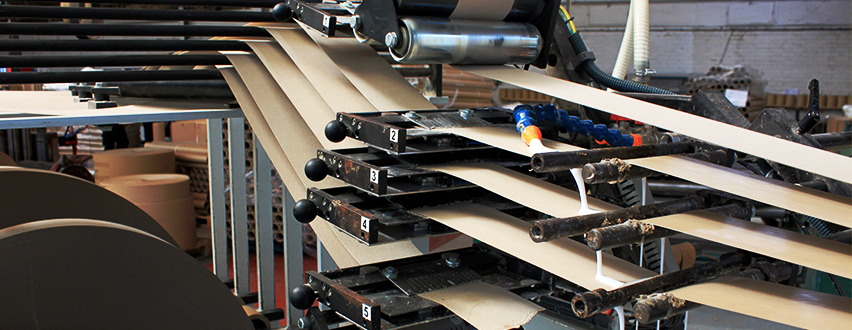How Are Cardboard Tubes Made For Essex Tubes?
Cardboard mailing tubes are cylinder-shaped products manufactured from wood pulp processed into varieties of cardboard-like paperboard, fibreboard, kraft paper or composites of paper and adhesive.
There are many uses for cardboard tubes across numerous industries, and they are usually fabricated from cardboard ribbons that surround a mandrel in the predetermined measurements.
Cardboard tubes are able to be custom-made to fit a diverse variety of contents and are manufactured in varying levels of thickness and structural strength, dictated by the extent of protection required.
Frequently used as packaging for mailing and shipping, cardboard tubes make great packaging for posters, documents and works of art that can be safely rolled up for storage/transport.
These custom mailing tubes are built to stand up to the pressures and stresses that take place during transit due to the high-quality materials used in their fabrication. Here are some other popular uses for cardboard tubes:
- Paper cores for fabric rolls, toilet paper, kitchen towels and wiring
- Coin banks for the collection of donations
- Caulking cylinders used in the construction industry
- Grease inserts for the mechanical and automotive industries
- Paper cans for packaging cosmetic products, various foods and other merchandise
- Heavy-duty cardboard tubes with high durability for forming concrete pillars for the construction industry.
A Step-By-Step Process Of How Cardboard Tubes Are Made
The majority of cardboard tubes have a spiral wound design, made stronger by added adhesives.
In the first stage of how cardboard tubes are made, large cardboard sheets are trimmed into narrow ribbons, before an application of adhesive coating and diagonally wrapped around a custom sized and shaped mandrel.
Multiple layers can be applied to the central mandrel, dictated by the predetermined strength requirements of the completed tube.
Cardboard tubes are classified and measured by the interior, not the exterior, and whilst there can be great variation, most tubes are up to 48 inches long to guarantee their strength and resilience.
In more heavy-duty applications that require high strength, water-resistant cardboard, special adhesives and interior waterproof seals can be incorporated during manufacturing. The mix of wood pulp and resin is precisely formed and cured and may be given additional oven curing.
During this post-forming heat treatment, the pulp coalesces to the adhesives to deliver a more robust product. This ensures the finished product is highly durable and able to hold its shape better when subjected to humidity or the elements.
These properties are important, especially when products must be protected against damage from storage, transit and exposure to moisture and the open air.

Keeping Contents Safe
Thicker cardboard tubes should be used for the storage or delivery of breakable items. The tubes need to have sufficient strength to protect against bumping, denting and breakage whilst being transported, and it is also important to ensure you order the appropriate size of tube that won’t allow the contents to move around inside the packaging.
In most cases, both ends of the tube are sealed with a plastic plug, of which one is removable (though it will be sealable for postal purposes, particularly where confidential contents are involved).
In some cases, the tubes are sealed at each end by folding the edges in. The stated tube dimensions factor in wall thickness and closing space at both ends.
Shipping and mailing tubes tend to be stronger than boxes and make an ideal shipping container for products that can’t be folded like posters, blueprints, large maps and artwork.
Versatile And Robust
The common uses of cardboard tubes depend mainly on the application, based on size, function and industry. The tubes may include an outer layer of colourful, custom-printed foil or paper.
When packaging food processing products, this outer layer can include information about the items and/or logos. With gift packaging, colours and patterns are frequently printed on the outside of the cylinder.
Cardboard tubes in the modern age are regularly manufactured using recycled paper, while the ones made from more durable materials are fit for repeated usage, which makes them a cost-effective alternative to plastic, metal, wood or glass packaging.
Cardboard resources are easy for manufacturing companies to purchase, cut and recycle, and cardboard tubes even compete with plastic and metal ones in the ratio of strength-to-weight.
This makes them ideal for the postage, shipping and storage of virtually any material. Furthermore, hard-wearing cardboard tubing is very hard to dent or break, ensuring sufficient protection against heavy handling.
That said, it is important to note that cardboard is porous and may need extra non-porous layers on the inside or outside to protect against moisture when being used with food processing or electrical wiring.
Nevertheless, cardboard tubes are robust, versatile and renewable, delivering a superb solution for a number of industrial and commercial tubing requirements.


I didn’t know that there were special adhesives and waterproof seals available to make a more heavy-duty product. Lately, I have been curious about how paper/cardboard tubes are made. I’m glad to hear that they are frequently made from recycled materials.